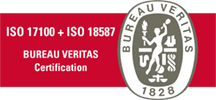International Translators Day: why choosing a certified translation company matters
International Translators Day is the perfect moment to choose a certified translation company you can trust. On 30 September, we celebrate the professionals and standards that make global communication work. The UN officially recognises this observance and its role in connecting nations. (United Nations)

Table of Contents
Why a certified translation company matters on 30 September
International Translators Day (30 September) honours translators, interpreters and terminologists worldwide—timed with the feast of St. Jerome, patron of translators. The United Nations designated the day in 2017, recognising the profession’s role in peace, development and understanding. (United Nations)
For organisations, the date is a timely reminder to review language workflows and quality. A certified translation company gives you a clear process, documented checks and the assurance that your content will be understood as intended—legally, technically and culturally—in every target market.
If you handle anything from contracts to product manuals, aligning your strategy with an ISO-based provider brings discipline to delivery. Our own approach is explained on our Translation Services page, where you’ll find service tiers, deadlines and desktop publishing support that help teams launch faster.
How a certified translation company safeguards quality
A certified translation company doesn’t just translate; it runs an auditable process. ISO 17100 requires qualified linguists, a second-person review and documented project management. You can see how we apply this in practice across fields such as Technical Translation and Legal Translation—two areas where accuracy and terminology control are mission-critical.
Quality also comes from culture: commitments, KPIs and continuous learning. Explore our “Zero Errors, Total Satisfaction” commitment and our programme for Continuous Improvement to see how we prevent issues rather than simply fix them after delivery.
A mature provider invests in people. Translator training, mentoring and feedback loops ensure that each project benefits from the latest best practice. That’s why Ongoing Training is a pillar of our operations year-round.
What “certified” really means for your documents
“Certified translation” can mean different things depending on jurisdiction. In many cases, a translation must be signed/stamped by a notary or lawyer; some cross-border uses also require a Hague Apostille attached to the notarised signature. Portugal’s Public Prosecutor (Ministério Público) explains the apostille’s role in authenticating public documents for international use. (Ministério Público)
If your documents will circulate abroad, tell your provider the destination country at the start. A certified translation company will plan the right path—from sworn translation to notarisation to apostille—so your paperwork is accepted without delays.
For an overview of when certification is needed and how we handle it, see Certified Translations. Clear guidance early on avoids last-minute rework and helps you meet filing or tender deadlines.
Practical ways to mark International Translators Day
Use the day to audit your content pipeline. Map where language can create friction—from sales decks to user manuals and regulatory filings—and prioritise what impacts revenue or compliance. Pair teams with specialist linguists who know your sector, then standardise terminology and style.
If you manage global launches, build a localisation playbook. Define review roles, file formats, translation memory rules and hand-off schedules. Your certified translation company can help you structure this and advise on fit-for-purpose turnaround options (standard vs. urgent) as set out in our Translation Services overview.
Finally, join the celebrations. The International Federation of Translators (FIT) curates themes and materials each year, spotlighting the craft and its impact. It’s a great source of inspiration for internal comms and social posts around 30 September. (en.fit-ift.org)
From tech to training: raising the bar all year
Today’s language operations blend human expertise with technology. Terminology management and translation memories help keep phrasing consistent across products and markets. Secure client portals streamline file exchange, approvals and status tracking—reducing email chains and version risk.
But tools only work when people do. We invest in translators who specialise and upskill continuously, supported by editor feedback and domain glossaries. Learn how this ethos shapes our culture in We Translate the World—our way of putting clarity and user impact first.
When your content stakes are high—legal, technical, scientific or financial—specialist teams matter. That’s where a certified translation company stands apart: standards-driven delivery, sector expertise and measurable quality.
How to choose a partner today
Look for evidence rather than promises: ISO 17100 compliance, named reviewers, terminology governance and sample workflows. Verify experience in your domain, ask for references and request a small pilot with measurable acceptance criteria.
Double-check that your provider can handle certified use cases (notary/lawyer certification and, where needed, apostille). If your roadmap includes product manuals, contracts or filings, start with our Certified Translations page, then explore Technical Translation and Legal Translation. Our broader approach to service quality is detailed in Translation Services and Continuous Improvement—and is anchored by our “Zero Errors, Total Satisfaction” commitment.
On International Translators Day—and every day—the right certified translation company helps you publish with confidence, protect your reputation and accelerate growth.
FAQ
Q1. What is International Translators Day and why is it on 30 September?
International Translators Day is an annual observance honouring translators, interpreters and terminologists—the professionals who make multilingual communication possible. It falls on 30 September to coincide with the feast of St. Jerome, widely regarded as the patron saint of translators. The United Nations General Assembly recognised the day in 2017, highlighting how language professionals foster peace, understanding and development across borders. (United Nations)
For businesses, the date is more than a celebration; it’s a prompt to assess whether your language operations are robust. Reviewing vendors, terminology assets and approval workflows each year can reduce risk and increase speed to market. Treat the day as a checkpoint for quality and compliance.
Q2. What’s the difference between a “certified translation” and a “sworn translation”?
Definitions vary by country. Broadly, a “certified” translation is one that includes a formal statement (and often a stamp/signature) confirming it is a faithful rendering of the original. A “sworn” translation may be produced by a translator who holds a specific public credential, or it may be certified in front of a notary or lawyer. For cross-border use, an apostille can be required to authenticate the official signature. In Portugal, the Public Prosecutor clarifies how the apostille legalises documents for international acceptance. (Ministério Público)
Your provider should advise on the exact steps for your destination country. That’s one advantage of partnering with a certified translation company: consistent guidance on certification, notarisation and apostille so your documents are accepted the first time.
Q3. How does ISO 17100 improve translation quality?
ISO 17100 sets requirements for resources, processes and qualifications in translation services. It mandates that translations are produced by qualified linguists and revised by a second, independent linguist—reducing the chance of errors making it into final copy. It also formalises project management, security and traceability, which helps when you need to demonstrate due diligence.
The standard doesn’t replace expertise; it channels it. Providers that blend ISO discipline with sector-specialised translators, clear terminology governance and continuous training typically deliver the most reliable results. Those attributes are core to the way a certified translation company operates daily.
Q4. How can my organisation celebrate International Translators Day meaningfully?
Start with people. Thank your in-house linguists and supplier teams, share success stories and make quality visible. Next, invest in the future: sponsor training or certification for reviewers, refresh your terminology, and run a pilot to improve a process pain point (for example, glossary sign-off or multilingual DTP). Finally, tell the world—use the FIT theme and materials to raise awareness about the impact of translation on safety, access and growth. The International Federation of Translators curates yearly themes and resources you can adopt. (en.fit-ift.org)
Links
- Internal:
- External:

